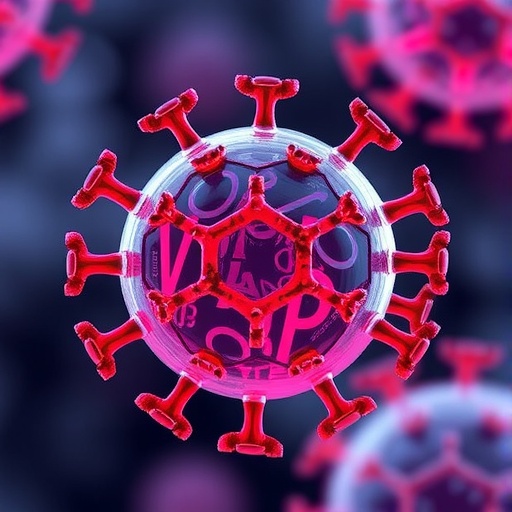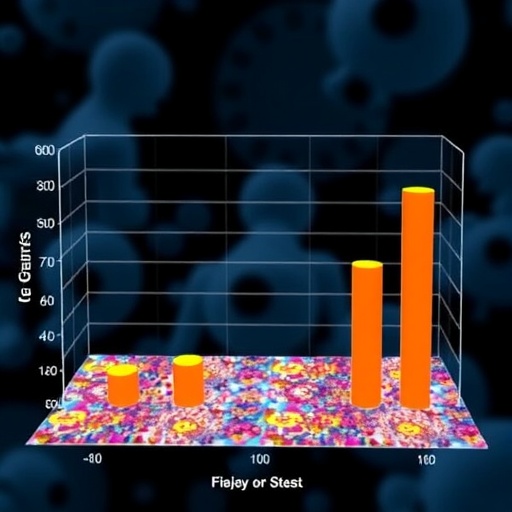In a groundbreaking development that could redefine approaches to combating hospital-acquired infections, researchers have unveiled a novel vaccination strategy targeting a notorious multidrug-resistant bacterium, Acinetobacter baumannii. This pathogen has long plagued healthcare systems worldwide, especially through catheter-associated urinary tract infections (CAUTIs), which account for a significant proportion of complications in hospitalized patients. The scientific team, led by Timm et al., has identified a unique adhesin protein, Abp2D, on the bacterial surface and successfully developed a vaccine that primes the immune system against it, offering robust protection against these stubborn infections.
Catheter-associated urinary tract infections are a major source of morbidity in clinical settings, often leading to prolonged hospital stays, increased antibiotic usage, and mounting healthcare costs. The formation of bacterial biofilms on catheter surfaces has made these infections particularly resistant to conventional treatments. Acinetobacter baumannii, in particular, is infamous for its capacity to rapidly acquire resistance mechanisms against multiple antibiotics, rendering many treatment options ineffective. The urgent need for alternative preventative measures has driven scientists to explore the bacteria’s virulence factors, with adhesins being a prime target.
Adhesins are specialized molecules that bacteria use to adhere to host tissues or medical devices, initiating colonization and biofilm development. Among these, the Abp2D adhesin identified by the research team represents a critical element facilitating Acinetobacter baumannii’s attachment to urinary catheters. The structural characteristics of Abp2D include surface-exposed domains capable of mediating strong interactions with the catheter surface, which is the first step in biofilm formation and subsequent infection. By focusing the immune response on this adhesin, the vaccine aims to disrupt the initial colonization process.
.adsslot_CSk92usLVb{ width:728px !important; height:90px !important; }
@media (max-width:1199px) { .adsslot_CSk92usLVb{ width:468px !important; height:60px !important; } }
@media (max-width:767px) { .adsslot_CSk92usLVb{ width:320px !important; height:50px !important; } }
ADVERTISEMENT
The study employed a comprehensive approach, integrating structural biology, immunology, and in vivo infection models to harness the potential of the Abp2D protein as a vaccine antigen. The researchers first characterized the Abp2D protein using advanced molecular imaging techniques to elucidate its structural motifs responsible for adherence. High-resolution crystallography allowed for precise mapping of epitopes that could elicit a protective immune response, guiding the rational design of the vaccine candidate.
To test the vaccine’s efficacy, animal models were immunized with the Abp2D protein, exposed subsequently to Acinetobacter baumannii, and monitored for infection development. The vaccinated subjects exhibited significantly reduced bacterial colonization on catheter surfaces and lower incidence rates of urinary tract infection symptoms compared to control groups. Immunological assays demonstrated a robust production of specific antibodies targeting the adhesin, which impeded bacterial adherence and biofilm establishment, validating the vaccine’s mechanism of action.
One of the pivotal aspects of this research is its focus on preventative vaccination rather than solely therapeutic intervention. By immunizing patients, particularly those at high risk of CAUTIs such as those requiring long-term catheterization, the incidence of infection can be markedly decreased, mitigating the use of broad-spectrum antibiotics and curtailing the spread of antibiotic resistance. This prophylactic strategy could mark a paradigm shift in infection control within hospital environments.
The implications of this study extend beyond catheter-associated urinary tract infections. Acinetobacter baumannii is a formidable pathogen involved in various serious infections, including pneumonia, bloodstream infections, and wound infections. The success of an adhesin-targeted vaccine against CAUTIs suggests potential avenues for developing similar vaccines against other forms of Acinetobacter infections, broadening the horizon for combating multidrug-resistant bacterial diseases.
Beyond its clinical impact, the study also advances the understanding of bacterial adhesion and biofilm biology. Detailed structural insights into the Abp2D adhesin enrich the scientific community’s knowledge of microbial pathogenic mechanisms, underpinning future research into novel therapeutic targets. This emphasis on fundamental science coupled with translational potential exemplifies the best of biomedical innovation.
Furthermore, the vaccine’s design incorporates modern biotechnological advancements, including the use of recombinant protein expression systems and adjuvant formulations optimized to stimulate potent, long-lasting immune responses. The stability, safety, and immunogenicity profiles evaluated in preclinical testing are promising indicators for subsequent clinical trials. The prospect of a broadly applicable, effective vaccine against a recalcitrant hospital pathogen is both exciting and urgent.
The study also addresses significant challenges related to vaccine development for Gram-negative bacteria, which have historically been difficult targets due to their complex outer membranes and diverse virulence factors. By honing in on a specific adhesin essential for infection establishment, the researchers circumvent the need to target a wider array of antigens, streamlining vaccine production and potentially reducing adverse effects associated with broader immune activation.
While the research is still in early stages regarding human applications, the path forward is clearly illuminated. Future work will need to focus on scaling up vaccine production, optimizing delivery methods for human use, and conducting phased clinical trials to assess safety and efficacy in patient populations. Given the global scale of antibiotic resistance and hospital-acquired infections, expedited development of such vaccines is a public health priority.
Importantly, this study underscores the value of precision medicine approaches in infectious disease. By targeting bacterial components intricately involved in pathogenesis rather than generalized bacterial populations, interventions can be more effective and selective. This precision reduces collateral damage to the host microbiota and preserves beneficial bacteria, an increasingly appreciated factor in patient outcomes.
In conclusion, the vaccination strategy targeting the Acinetobacter baumannii adhesin Abp2D proposed by Timm and colleagues represents a revolutionary advance in the prevention of catheter-associated urinary tract infections. By disarming the bacterium’s ability to stick and form biofilms, this approach holds promise for drastically reducing a major healthcare-associated infection burden. As antibiotic resistance continues to threaten modern medicine, innovations like this vaccine provide hope for effective, sustainable infection control strategies.
Continued investment in research elucidating bacterial adhesion mechanisms and vaccine development is essential for translating these findings into widespread clinical benefits. This work exemplifies how detailed molecular understanding combined with immunological ingenuity can pave the way toward novel, game-changing therapeutic paradigms.
The global healthcare community eagerly awaits further developments and clinical validation of this promising vaccine approach. Should its efficacy translate to humans, the vaccine could become a cornerstone in infection control protocols, protecting vulnerable patients worldwide and easing the critical strain posed by Acinetobacter baumannii and other resistant pathogens.
Subject of Research: Vaccine development targeting Acinetobacter baumannii adhesin protein Abp2D to prevent catheter-associated urinary tract infections.
Article Title: Vaccination with Acinetobacter baumannii adhesin Abp2D provides protection against catheter-associated urinary tract infection.
Article References:
Timm, M.R., Tamadonfar, K.O., Nye, T.M. et al. Vaccination with Acinetobacter baumannii adhesin Abp2D provides protection against catheter-associated urinary tract infection. Nat Commun 16, 7341 (2025). https://doi.org/10.1038/s41467-025-62402-9
Image Credits: AI Generated
Tags: Abp2D adhesin protein vaccineAcinetobacter baumannii antibiotic resistancebacterial biofilm resistance strategiescatheter-associated urinary tract infections preventionhealthcare-associated infection managementhospital-acquired infections solutionsimmune response to bacterial infectionsinnovative approaches to infection controlmultidrug-resistant bacteria challengesnovel vaccination strategies in healthcarereducing hospital stay complicationsvaccine development for urinary tract infections





